A Walk in the Garden earlier this morning .
Gardens never stand still and constantly evolve be it through neglect where the garden just reverts to an overgrown jungle or just changed over the years as the owner or owners hand it on or if the property changes hands . In the case of famous gardens which are created like in the UK say Hidcote in the early 1920’s or Sissinghurst in the 1940’s and which then are taken over by the National Trust and remain continually open to the public , a decision has to be taken as to whether to continue with the style of their famous owners or move with the times and bring in modern themes and innovations . Nostalgia plays a big part as the public likes continuity and a link with the past but there has to be a compromise as plants die and need to be replaced and more often than not the Trust decides to refresh borders and go for a different look .
I was reminded of that this week when reading an article about Sissinghurst , the garden Vita Sackville West created in Sussex and which is the most visited and most iconic garden in England … the article by Tim Richardson related how Sissinghurst today although a model of design and modern trends would not be recognised by Vita as “ there was little of the romantic effusiveness, the pleasant disorder , at times shading into chaos which this aristocratic owner , the very epitome of shabby chic had carefully nurtured ”.
You really have to hand it to the Brits they know how to write about gardening and of course the description of the upperclass wealthy garden owners of the 1930’s is a long way from Barron Park where I grew up with our line of white allysum and blue lobelia !!
Having said that I always admired Vita Sackville West’s regal style and loved her gardening motto of Cram Cram Cram as she stuffed her borders with plants … I visited Sissinghurst in 1982 having cycled there through Southern England and I loved it immediately , a really inspirational garden set in a chocolate box village which was quintessentially English …. if you are to visit just one garden in England let it be Sissinghurst . I remember that it was at Sissinghurst that I first saw hostas grown together in bulk as an architectural feature and in those days here in Ireland it was difficult to get the big leafed sieboldiana hostas and they have been a favourite of mine ever since and to this day I can’t resist them in a garden centre .
Of course if you are in that corner of England , Kent , then it is only a short drive across to East Sussex to visit Great Dixter , the famous garden of the late Christopher Llyod , whose book , The Well Tempered Garden , inspired a generation of gardeners when published in 1973 … and of course if at Great Dixter then it is only another short hop to visit Beth Chatto’s gravel garden in Essex .
That area of England is full of famous gardens and during my first visit there by bicycle in 1981 I also took in Rudyard Kipling’s garden and Lord Mountbatten’s near Portsmouth together with Winston Churchill’s garden at Chartwell near Sevenoaks in Kent .
For over twenty years through the 1970’s & 80’s before I left Ireland to work abroad with the EU I was big into long distance cycle touring and cycled all over England , Scotland , Wales and of course Ireland , doing up to 10,000 miles a year and used the trips to visit gardens , castles , battle fields along the way . I also regularly toured Northern France and the Loire Valley area and once when seconded to the Dutch Customs Service by the Revenue Commissioners and based in Harlingen on the North Sea I took my bike with me and used the opportunity to tour Holland and Belgium .
However my longest trip was in July 1985 when I cycled to Berlin from Ireland when Germany was still divided into East and West and cycled across the famous Check Point Charlie through the Berlin Wall into East Berlin …. the photo shows me arriving at the Brandenburg Gate with the famous or infamous wall in the background and to the left of the photo in no mans land is where the Hitler bunker still existed at the time .
At the end of October we had our last group of visitors for 2015 to the garden , the Kingston College garden society from Mitchelstown , a group of British expatriates who previously all lived in what was formerly Rhodesia now Zimbabwe and who left in the Mugabe regime which was not kind to the former colonial people .
As this group would have spent most of their lives in East Africa they naturally would have gardened with exotic plants and shrubs as I know from my own two years living in the Seychelles where in tropical conditions plants flower all year round and if they missed seeing such a palette of plants in this garden they were kind enough not to mention it !
I explained that everything we grew here had to earn it’s keep and look good when not in flower or bloom and that good leaf colour in summer AND good bark in winter were essential such as silver birch , the cornus range , eucalyptus while perennials also have to have good structure to keep the interest going when the flowers are gone over …. there are a few , a very few exceptions it has to be said that I break these rules for and among these are the sorbus lutescens and the rhus cotinus but these have leaf colour from early April onwards right until the end of November .
We also don’t grow roses as it is an occupation in itself to keep these sprayed for black spot and green fly with the result that you don’t enjoy the rose as you are too busy looking for the signs of black spot … and did I mention the daily dead heading … another reason not to grow roses …. there is even an exception with roses as I love rosa rugosa , a tough as old boots variety which never gets black spot or green fly and you can prune it to the ground every few years with a chain saw so this rose I love !
I don’t bother either with magnolia or cherry blossom trees as the flowers are too fleeting and you are left after three weeks flowering with a pretty nondescript tree for the rest of the year .
The silver birch are just tremendous in all seasons , white bark in winter , light downey soft green leaves throughout summer and glorious autumn colour and in these photos you see two types , jacquemontii for the purest white bark and river birch for damper soil but still equally good leaf and colour although not as white .
Clean up time in the water garden with an assault on the parrot feather which no matter how much you pull out this hugely invasive water plant has the capacity to regenerate from a few strands and within a year will be as big as ever … it looks great a lovely glaucus green feathery leaf but it will take over entire lakes with not a glimpse of water to be seen . Generally I clear it on a regular basis when it is close to the banks and accessible but once a year I go in up to my waist for the further away areas and it does not pull out easily but you grab as much as you can and this weakens the overall structure and eventually you get all of it out … but next year it will be back again !
Parrot feather is a beautiful looking plant which is why I placed it in the water in the first place as is the bull rush or typha , a plant that when we were children we used to hunt down in country streams outside Clonmel as when dry or better still if doused in petrol the heads would burn spectacularly for a long time …. I loved the look of these in the first few years but again hugely invasive when they get going and they colonise like crazy but unlike parrot feather they are easy enough to get out of the water but you need to be in the water and grab with both hands low down ….. not so nice at this time of year I can assure you as this week I removed over 100 of them while in waist high water !
In fairness it was my own fault as the bull rush is a terrific water plant which adds architectural height to a large size pond and looks good from the moment it pokes its head out of the water in February but I just let mine out of control and they took over but in future I will keep it in small groups and most importantly I will keep it in check so it doesen’t run rampant again . A few clumps of bull rush provide shelter for ducks and the water hens feel secure in the middle of a group and actually weave and anchor their nests between them .
A plant I grew for the first time this year was the banana plant , the Ethiopian black variety , I kept it in a pot as it will be cut down in the first frosts and needs to be kept undercover for the winter and I intend moving it indoors today … I like it so much in it’s current home in the gravel garden that I am delaying moving it as I know I should and of course the big debate is whether I should cut off its leaves or wrap them up in fleece .
One group of plants that are coming into their own just now are the pampas grasses and they will flower until next February … they do well here on the damp ground and I have a mixture of tall and dwarf varieties and by and large I prefer the dwarf ones as the plume hold up better to the winds .
This was a week for the nasty end of gardening as I cut down the gunnera and layered the sometimes metre wide leaves across the crowns to protect them from the frost and this makes a nice parcel and creates a neat look .
The gunnera look a bit sad looking compared to when they were in their pomp in late summer but their time will come again soon and all the better for being protected against winter frosts .
Snezana passed her lorry driver licence course in Munich last month after three weeks intensive training with the German Police and from now on I feel she is OK to drive the ride on mower here !
We finally decided on how to use the newly cleared bramble patch that I cut down in late August in the lower garden and we both agreed it was too nice a location not to use it for relaxation ! What is now a new patio terrace was finally finished by Peter this week when he laid the indian sandstone slabs . Originally I was planning a much smaller square patio but when Peter’s excavator revealed the full extent of the site we both agreed the patio area should be much bigger to take advantage of the natural site . I intend to barely touch the surrounding trees and in fact the finished patio already sits neatly within the cleared site and needs very little planting at all apart from low growing perreniaIs along the edges to soften the paving slabs .
I divided up my clumps of ground cover geranium variety Biokovo and planted these directly into the ground at the edges together with divisions of euphorbia Candice interspersed with slips I took from the bergenias and self seeded pieces of alchemis molis , lady’s mantle , from the gravel garden and most of these have already taken and will romp away when new growth starts again in spring but most importantly all these plants are ground cover and low growing so they won’t compete with the view from the new terrace . I then added some miniature daffodils variety tete a tete and minnow to add some late winter colour in February while on the bank leading away from the sandstone I will fill this with just one variety of plant , the vinca major or periwinckle , which has green leaves all year and masses of small white flowers from March to December , about fifteen plants will smother the bank within a year and provide colour and interest throughout the year .
It is only when you cut down and dig out brambles that you realise what a thirst for survival the common bramble has as it throws out shoots in every direction and each time these shoots reach the ground they immediately grow huge roots over 6 inches long and burrow into the ground where a new bush takes off . I took this photograph yesterday to show the tip of one of these shoots before it was able to attach itself fully to the ground and to show just how dangerous they are and if only we could grow a plant with the same tenacious thirst to propagate !
Carl Wright of Caher Bridge Garden in Co. Clare has written recently on his FB site about some wonderful varieties of vinca he has and there is one , vinca difformis with lovely pale flowers , a plant for difficult locations and a prolific flowerer which I will try and get .
Carl operates a very instructive FB site which you can find under Caher Bridge Garden and adds daily updates on plants in his wonderful rock garden looking their best on that day , he is also an intuitive photographer and his page is worth visiting for the photographs alone.
Visitors to the Garden this week
Finally …. even in dampest dreary November conditions a primary colour on the wooden bench , in this case a majorelle blue , lifts the picture .







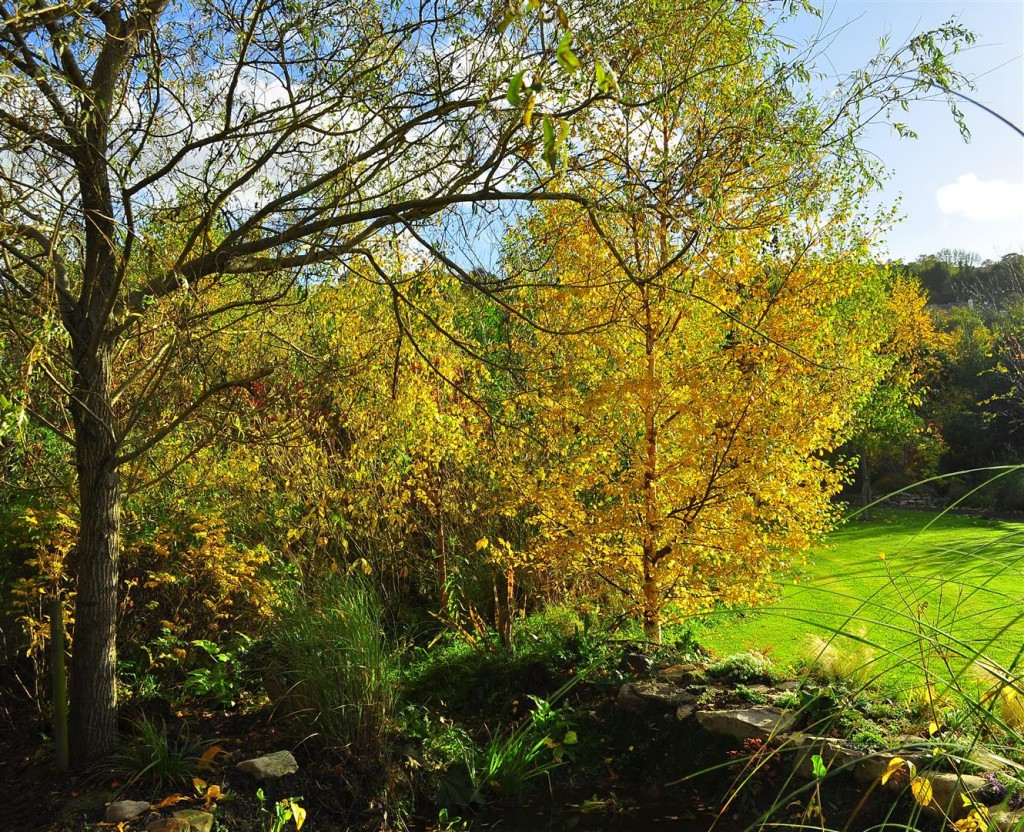
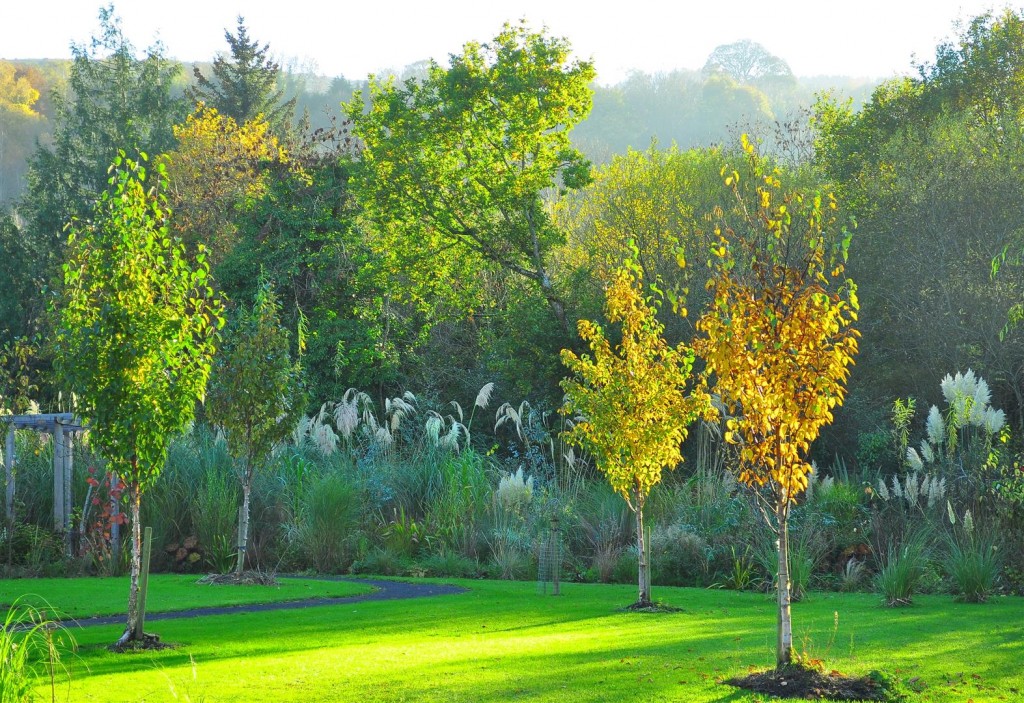
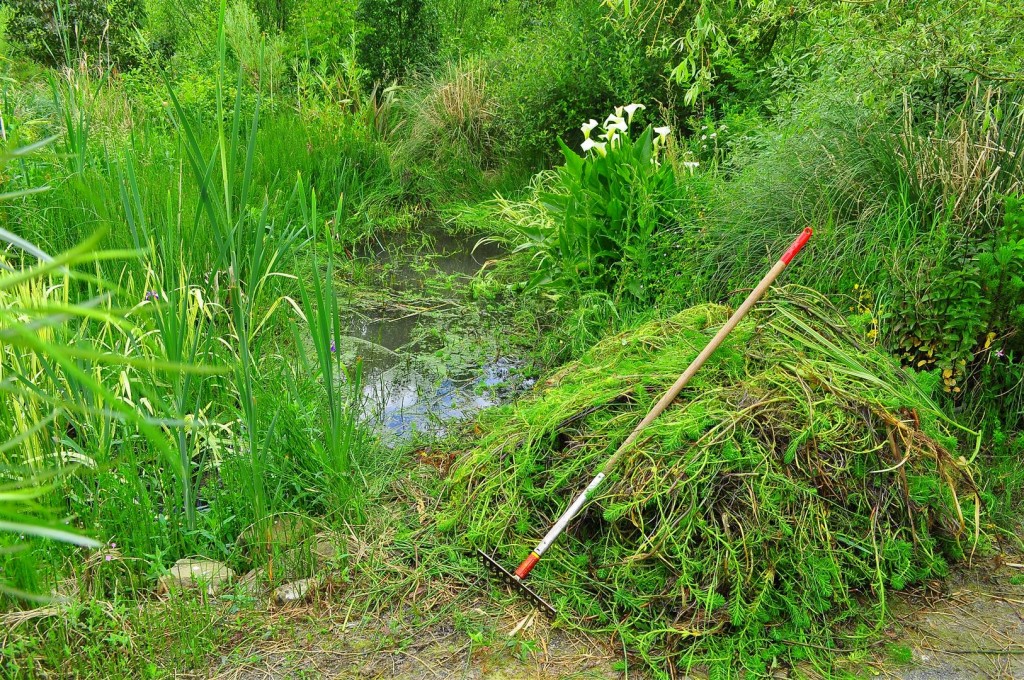
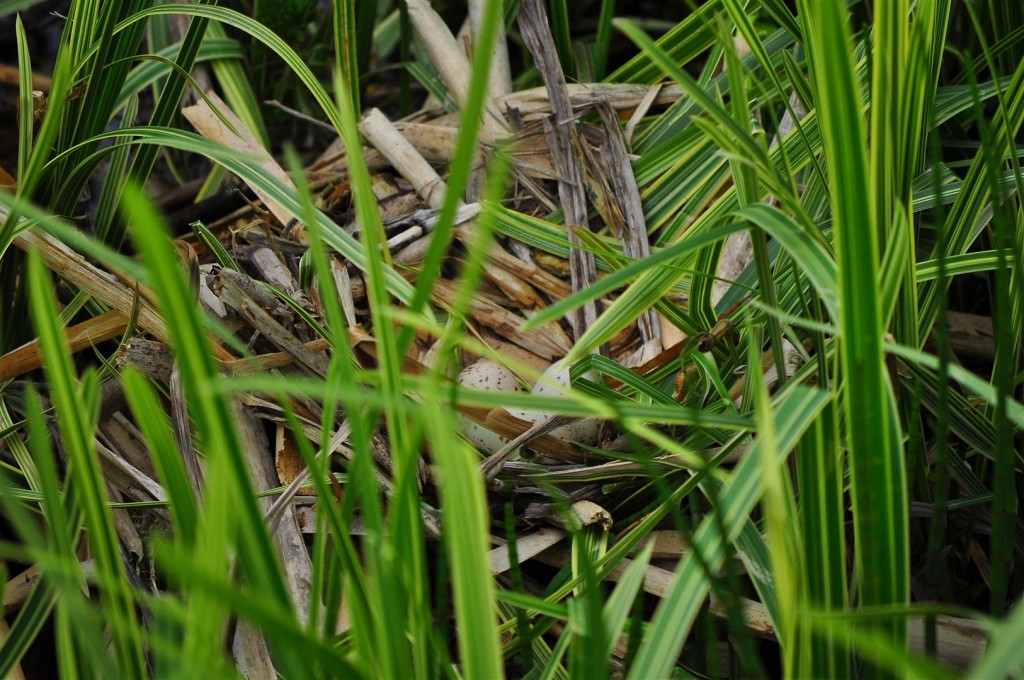
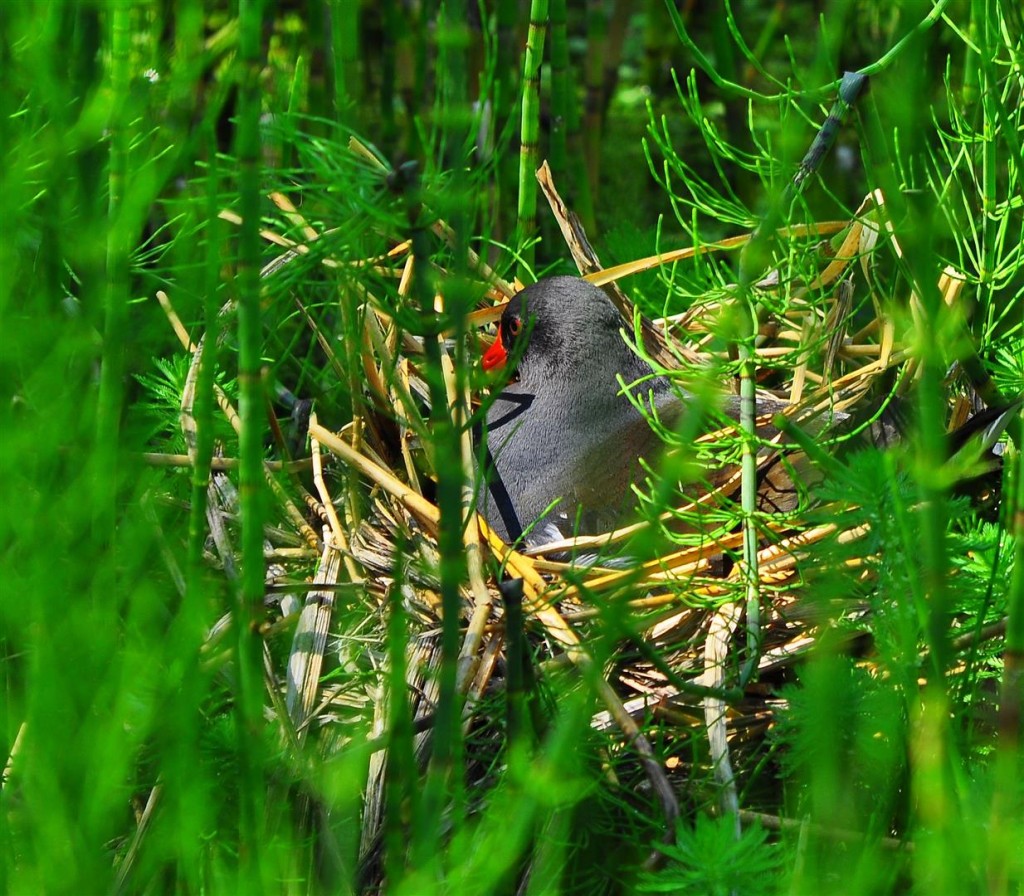
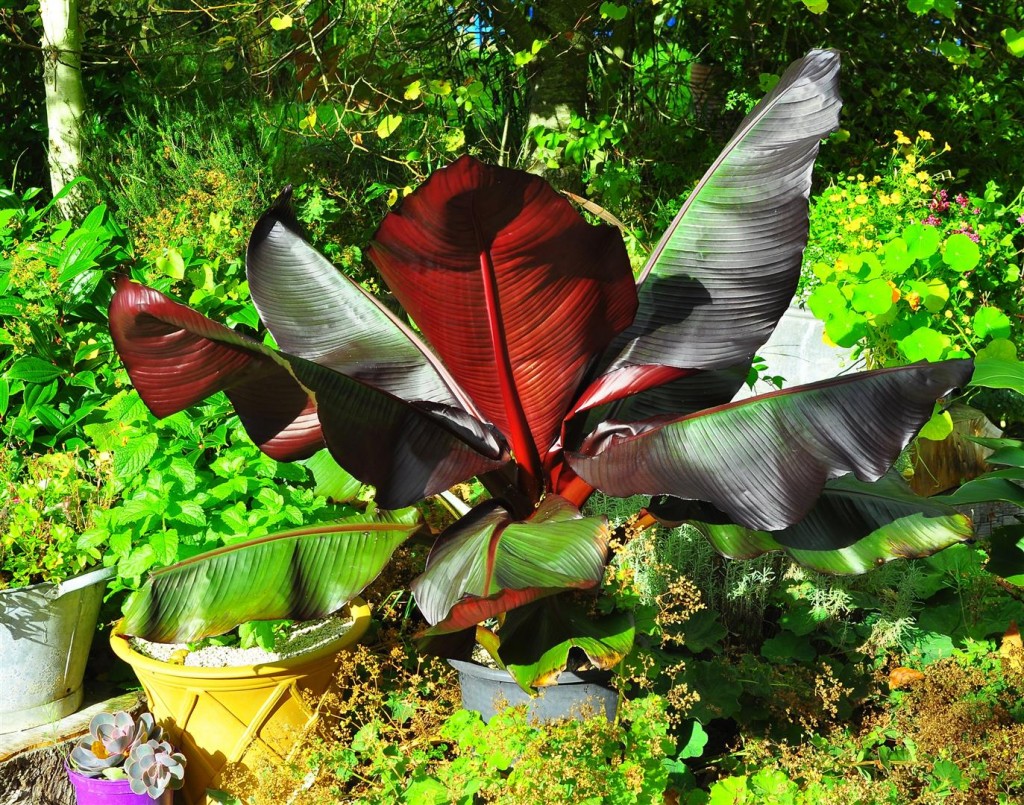

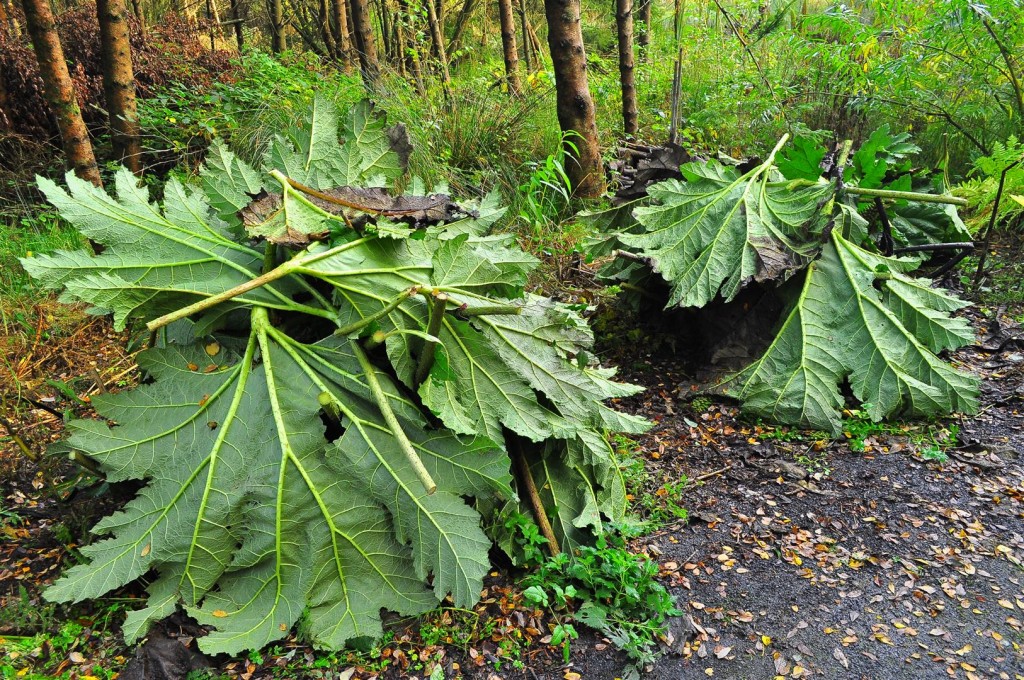
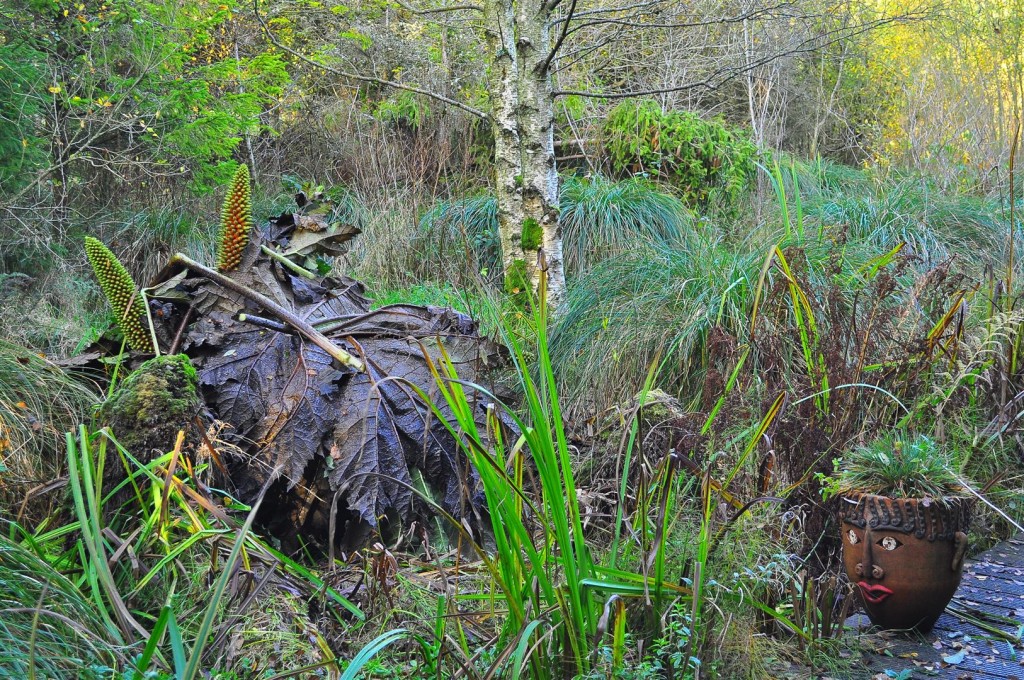


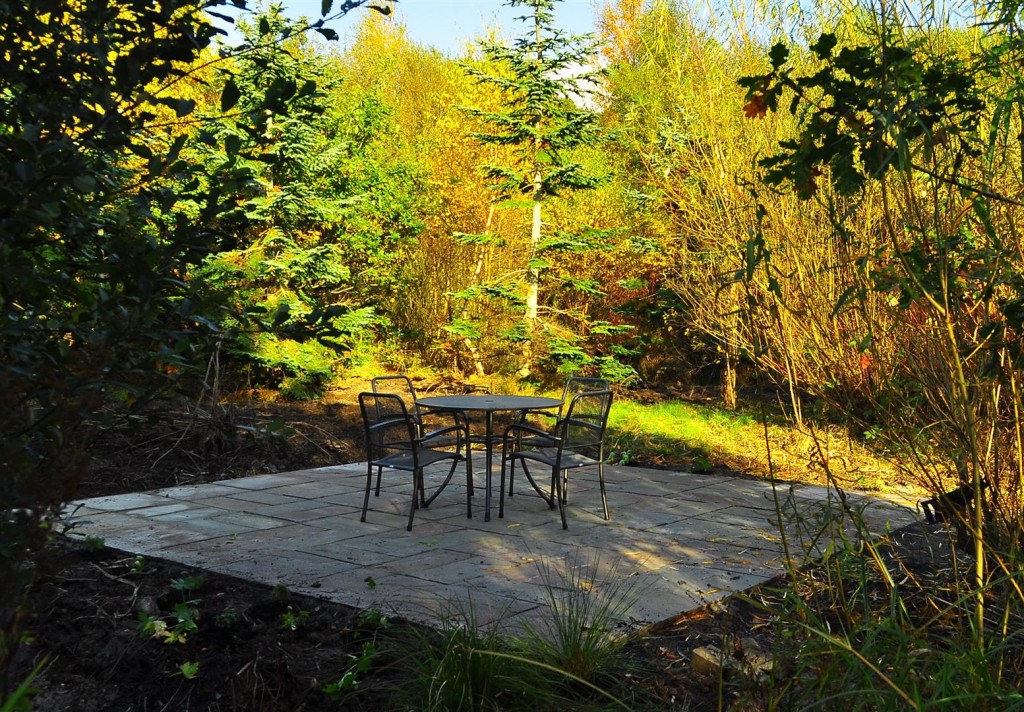
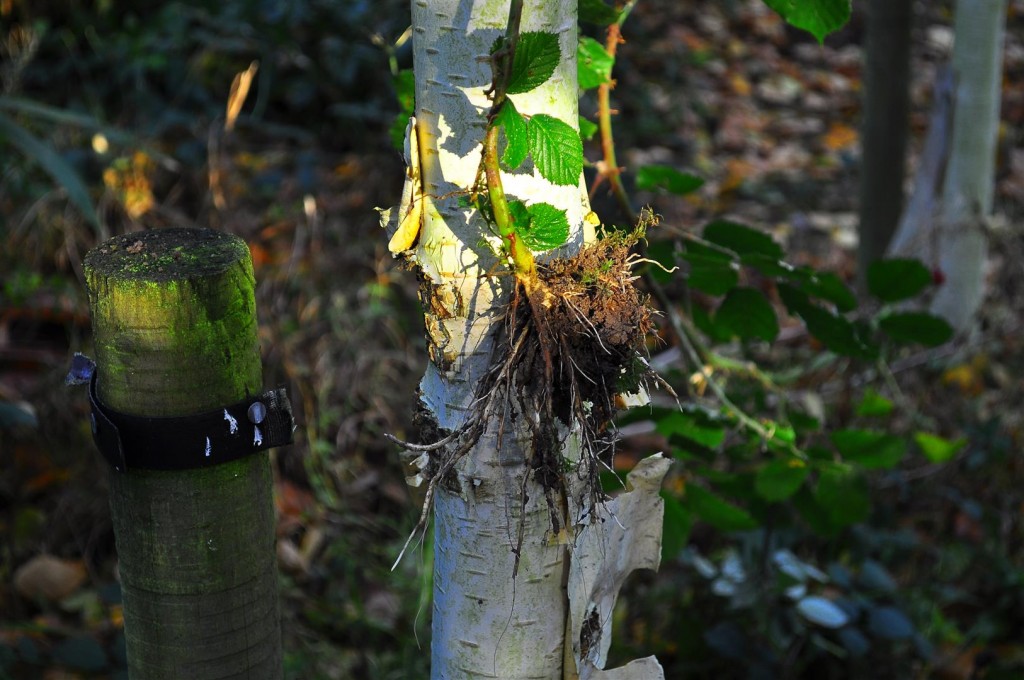
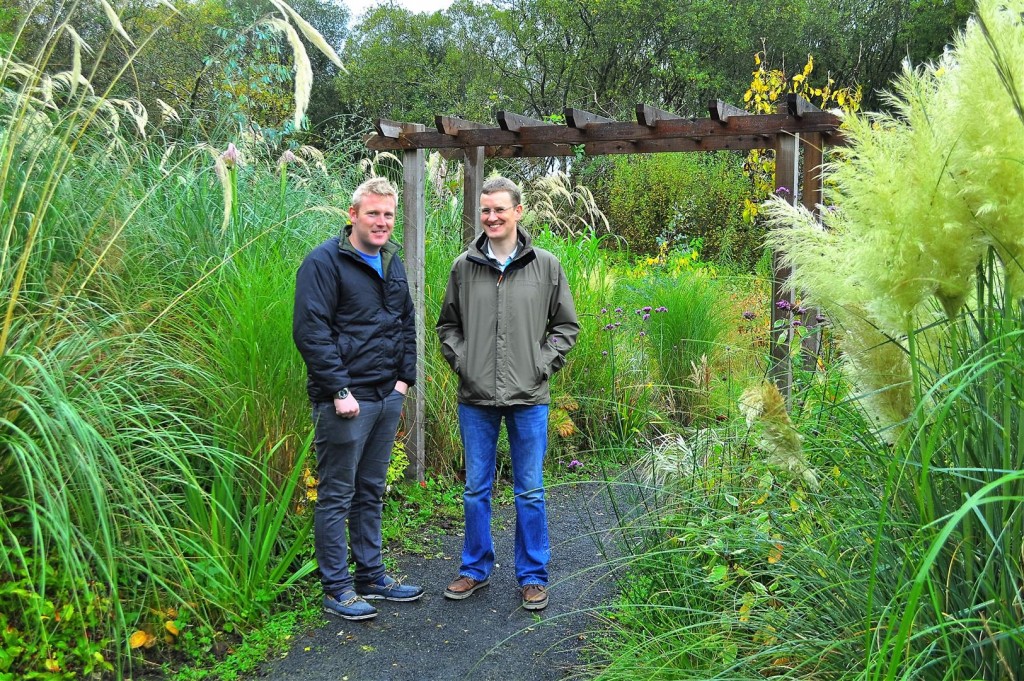
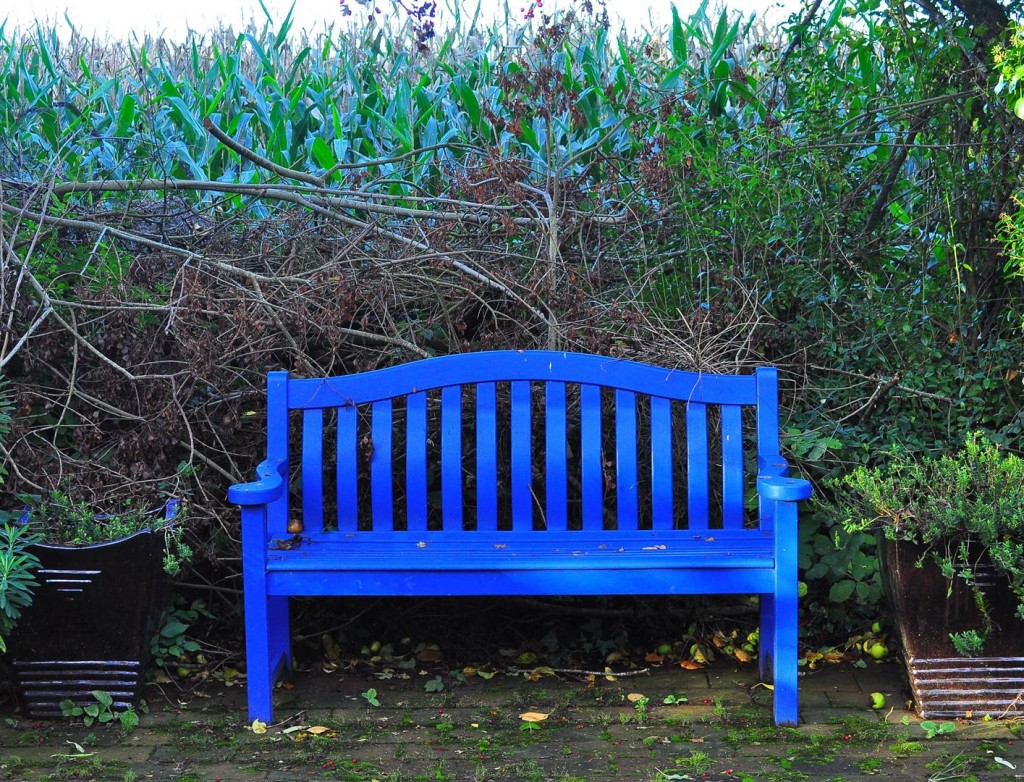
Leave a Reply